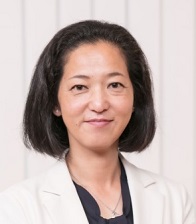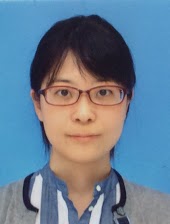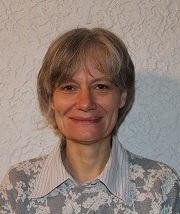レクチャー
梅津理恵 Rie UMETSU
Profile
- 東北大学 金属材料研究所 新素材共同研究開発センター 准教授
- 一般社団法人日本女性科学者の会 理事。
- 公益社団法人日本金属学会 男女共同参画委員会前委員長
現在は委員。 - 博士(工学)(東北大学)(2000年)。博士論文のテーマは、高いネール温度を有するMn系反強磁性合金の基礎物性と電子状態について。
- 専門は材料工学、磁気物性。Mn(マンガン), Fe(鉄), Co(コバルト), Ni(ニッケル) などの遷移金属元素が磁性の主役を担う、金属磁性材料の機能とその起源解明に向けた研究。
- 2014年「公益社団法人日本金属学会功績賞」、2014年「一般社団法人日本女性科学者の会奨励賞」、2019年「第39回猿橋賞」、2019年「公益社団法人日本磁気学会優秀研究賞」などを受賞。
Abstract
金属磁性材料は、それ自身が磁石になったり、磁石に引き寄せられる性質を持つほか、多様な機能を有し、身近なところで様々な用途で応用されています。新しい磁気機能性材料を探索したり、その起源を解明する研究を行っています。講義では、今まで研究してきた材料やその性質を紹介し、また、最近行っている放射光施設での実験についてお話しします。

柳澤 実穂 Miho YANAGISAWA
Profile
東京大学大学院総合文化研究科・先進科学研究機構において准教授をしています。お茶の水女子大学卒業後、同大学院の修士課程、博士課程へ進学し、細胞のような柔らかな膜系の研究で博士号(理学)を取得しました。その後、京都大学での研究員、九州大学での助教、東京農工大学での特任准教授を経て、現職につきました。私の専門とする柔らか物質系では、物理・化学・生物の研究者らが互いに協力しながら研究を進めています。様々な専門性を備えた人々との交流による刺激が、今も昔も、研究者を続けるうえでの糧になっています。
Abstract
生物の多様性と物理の一貫性好きだった私は、柔らかな材料であるゼリーや液滴、膜、細胞などを研究対象とするソフトマター物理学の研究者になりました。こうした柔らかな物質系は、食品や化粧品など、古くからわたしたちの生活に役立ってきました。しかし、それらの物理的な性質がよくわかっておらず、化学的機能化の妨げとなっていました。また柔らかな物質の性質は生物に通じるため、生物の物理的理解に対しても、こうした研究が求められていました。こうした背景から、物理・化学・生物の知識を総動員して明らかとなるソフトマター研究の面白さや、研究者になるまでの道のり、研究者の日々についてお話します。

Lydia ROOS( Scientific Deputy Director of IN2P3 )
Profile
Lydia Roos is a research director at CNRS (French national center for scientific research), working on particle physics. She has always worked on very large experiments installed on particle accelerators. As a PhD student in Marseilles and then a young research staff in Grenoble, she worked on the the Large Electron-Positron collider (LEP) at CERN, Geneva. Since 1996 she works in Paris. She studied matter-antimatter asymmetry with the BABAR experiment at the Stanford Linear Accelerator Center (California). During a four-year stay in Beijing devoted to fostering the Sino-French scientific collaboration, she initiated the France-China Particle Physics Laboratory (FCPPL) and was FCPPL director until 2011. She then joined the ATLAS experiment at the Large Hadron Collider (LHC), the world largest and most powerful particle accelerator, located in the former tunnel of LEP at CERN. She was involved in the search for the Higgs boson and measurement of its properties. She is also interested in the search for new potential resonances. Since 2018 she is a scientific director at the National Institute for Nuclear Physics and Particle Physics (IN2P3), which manages all CNRS nuclear and particle physics laboratories in France.
Abstract
The Large Hadron Collider (LHC) at CERN and its associated experiments are the largest scientific project ever constructed. In 2012, an important discovery was made: the Higgs boson was observed for the first time. Why is this important? What have we learned since? What remains to be discovered at the LHC? LHC is not only a great scientific success, it is also the incredible story of thousands of scientists from all over the world, working together to advance science. I will present both the scientific and human aspects of this project.
